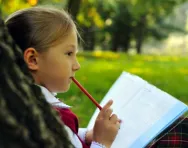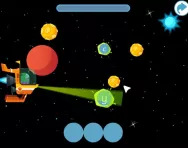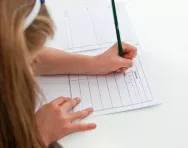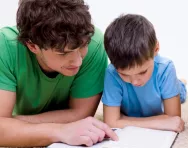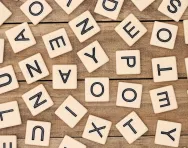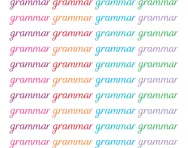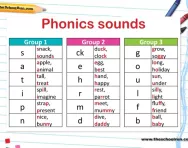TheSchoolRun.com closure date
As we informed you a few months ago, TheSchoolRun has had to make the difficult decision to close due to financial pressures and the company has now ceased trading. We had hoped to keep our content available through a partnership with another educational provider, but this provider has since withdrawn from the agreement.
As a result, we now have to permanently close TheSchoolRun.com. However, to give subscribers time to download any content they’d like to keep, we will keep the website open until 31st July 2025. After this date, the site will be taken down and there will be no further access to any resources. We strongly encourage you to download and save any resources you think you may want to use in the future.
In particular, we suggest downloading:
- Learning packs
- All the worksheets from the 11+ programme, if you are following this with your child
- Complete Learning Journey programmes (the packs below include all 40 worksheets for each programme)
You should already have received 16 primary school eBooks (worth £108.84) to download and keep. If you haven’t received these, please contact us at [email protected] before 31st July 2025, and we will send them to you.
We are very sorry that there is no way to continue offering access to resources and sincerely apologise for the inconvenience caused.
How English teaching has changed since we were at school
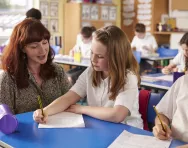
The English language may not have changed much since our own schooldays, but the way it’s taught most definitely has.
Many of us find ourselves baffled by the terms our children use (what exactly is a split vowel digraph, anyway?) and are unsure how to support them at home.
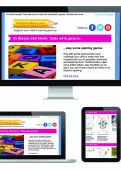
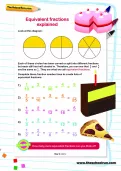
Start a unique learning programme!
- Weekly programme for each school year
- Worksheets sent direct to your inbox
- Keeps your child's learning on track
We take a look at some of the ways in which English teaching has changed since we were at school, and explain the theory behind today’s methods.
Learning letters and sounds
In our day: We were taught the alphabet by rote (remember the Alphabet Song?). We learnt the sounds that individual letters made (‘ah, buh, cuh’), and then their names (A, B, C).
Now: All children are taught to read using phonics. ‘They start by learning the sounds that letters make, beginning with the most common (S, A, T, P, I, N),’ says teacher Jo Payne, who runs the blog www.mrspteach.com.
‘Then they learn how letters combine to make different sounds, and the different ways of writing each sound.’ For example, ai, ay, and ey all make the same sound.
An important point to note is that letter sounds are pronounced differently from when we were at school. For instance, M is pronounced ‘mmm,’ not ‘muh,’ and S is ‘sss,’ not ‘suh.’
Your child’s teacher will be able to explain how letter sounds are pronounced phonetically.
Learning to read
In our day: We brought home flashcards with words that we had to learn by sight. ‘We were also taught to make educated guesses at unfamiliar words in our reading books, using the pictures as cues,’ says Jo.
Now: Phonics are the building blocks that children use when learning to read.
‘When children see an unfamiliar word, we encourage them to use their knowledge of phonics to work it out, breaking it down into its individual sounds and then blending them together,’ Jo explains. ‘This is called decoding, and is the main way we teach children to read.
‘Children may still bring home flashcards, but with phonemes to learn (e.g. ‘ee,’ ‘ay,’ ‘igh’) rather than whole words.’
Reading aloud
In our day: Our teachers would hear us read individually.
Now: Teachers (and TAs and parent volunteers) still listen to children read one-to-one, but guided reading is equally important.
‘This involves children reading with their teacher in a small group, and as well as working on their decoding, they also do comprehension activities to ensure they’re understanding what they’re reading,’ says Jo.
Usually, one group will work with the teacher on guided reading each day, while the other groups rotate around activities such as writing practice, grammar challenges and reading topic books.
Reading comprehension
In our day: Reading comprehension used to focus on the simple act of understanding what the text was talking about. We were asked straightforward questions like, ‘Who did Penny go to the park with?’ and ‘What was the weather like when the children were playing in the park?’
Now: Reading comprehension now goes much deeper than simply retrieving and summarising information.
‘As children progress through the school, they work through a hierarchy of comprehension skills, reading the inferences in the text, deducing what the author means, giving their opinion on what’s happening, and commenting on the effectiveness of language,’ says Jo.
Emergent writing
In our day: When we were learning to write, teachers would mark our work and if we spelt a word wrong, we were expected to learn the correct spelling.
Now: ‘The focus on phonics means that if a child spells a word incorrectly but it’s phonetically plausible, the teacher will give them credit for it, because they’ve used their phonics skills,’ Jo explains.
For example, a child might write ‘nite’ instead of ‘night’ and still be praised for good use of phonics.
Spelling
In our day: We had a list of spellings to learn and were tested on them at the end of the week.
Now: Most children do still have a weekly spelling test, but often they also have to show that they understand the words by writing sentences that include them.
‘It’s really important that they can put words into context, because if they don’t know how to use them, there’s no point learning to spell them,’ Jo says.
Grammar
In our day: We were taught to write English correctly, but not the terms for the grammatical concepts we learnt.
Now: ‘Now that children take a spelling, punctuation and grammar test in Year 6, there’s a lot more focus on naming grammatical terms and understanding how to use grammatical elements correctly,’ says Jo.
‘We’re having to teach children to identify and name things like the past progressive tense.
‘A lot of teachers are having to learn these terms themselves for the first time, but many children do very well in the tests.’
Handwriting
In our day: Many of us had lined handwriting books in which we practised our letter formation. We learnt to form letters individually and then how to join them together.
Now: In the period between our generation and our children’s, there was little focus on handwriting.
‘Now, however, there is a big push on handwriting in the National Curriculum,’ says Jo.
‘Schools have had to raise expectations and prioritise handwriting practice, because if a Year 6 child doesn’t have legible joined-up handwriting, they’re not meeting the expected standard for their age.’
Increasingly, schools are teaching children to join their handwriting (cursive) right from the start, rather than printing first and then moving onto joined-up writing.
Technology
In our day: Watching BBC schools programmes in class was as high tech as it got.
Now: Technology plays an important part in teaching literacy. It’s used in a whole range of different ways, from reading on e-readers to learning spellings using apps to putting together PowerPoint presentations.
‘Technology can be especially helpful for children who struggle with English; for example, spellcheckers can highlight words they’ve spelt wrong so they can try to correct them,’ Jo explains.
‘We aim for several pieces of writing each year to be done on the computer, and are introducing touch-typing, too.’
